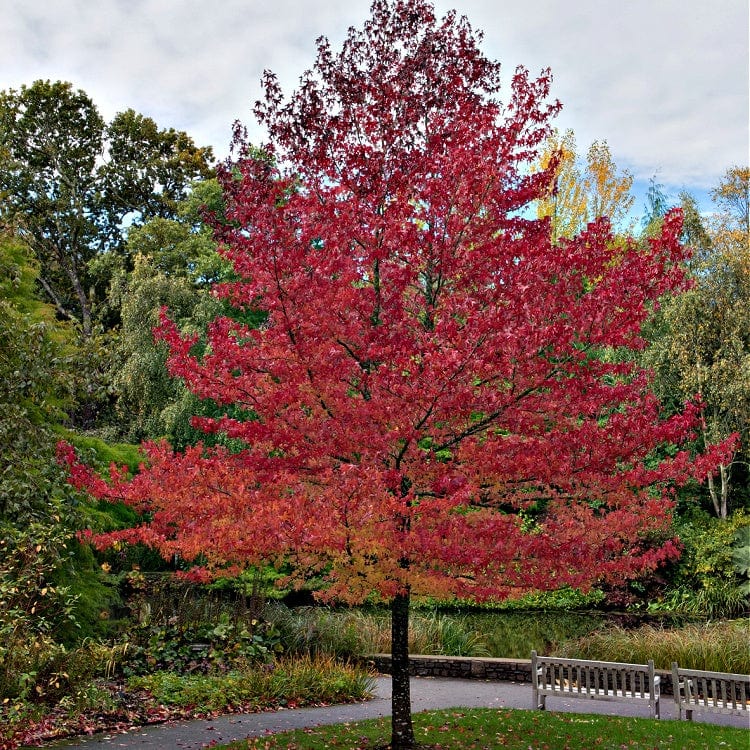Sweet Gum Seedlings
Couldn't load pickup availability
Ships 10-12 Days
Liquidambar styraciflua - Sweet Gum Seedlings
Sweet Gum Seedlings stands out as a deciduous tree with impressive autumn colors and distinctive star-shaped foliage. The Liquidambar styraciflua tree originates from North America, where it successfully grows in diverse soil types and adapts well to urban landscapes.
Planting and Care
The right planting conditions for this species require soil that drains properly and maintains slight acidity because the plant thrives in nutrient-rich soil filled with organic matter. Plants need regular watering during their first few years to develop a strong root system, which is critical in dry areas. After maturity, the plant develops drought resistance but benefits from regular watering for superior growth. When exposed to full sunlight, this plant achieves optimal growth conditions, during which its symmetrical canopy expands to create significant shading.
The tree requires sufficient spacing to support its expansive growth, which can reach a maximum height of 75 feet. Plant during the fall or early spring, when cooler temperatures allow roots to establish before facing extreme weather. The base of young trees benefits from mulching because it helps store water and shields roots from abrupt temperature changes. Regular pruning to eliminate lower branches will help maintain the tree's natural form while encouraging vertical growth. With regular maintenance, this hardy species enhances landscapes through its visual charm and ecological advantages.
Why Sweet Gum Seedlings is a Great Landscape Choice
This species exhibits a remarkable seasonal change as its standout feature. During fall, its leaves display brilliant red, orange, and purple colors, which makes this tree stand out as one of the most eye-catching among temperate zone trees. This tree's seasonal transformation beautifies landscapes while serving as an important food supply for wildlife. The seed pods of this species serve as a food source for birds and little mammals through winter.
This tree makes a valuable contribution to air purification beyond its aesthetic appeal. The tree's wide canopy is a natural filter that removes pollutants from the atmosphere, thus enhancing urban and suburban air quality. The extensive root system of this tree prevents soil erosion, which enables it to stabilize riverbanks and slopes effectively. Due to its adaptability and resistance to different environmental challenges, this species stands out as an excellent choice for urban parks, backyard landscaping, and forest renewal initiatives.
The Wildlife and Ecological Benefits of Sweet Gum Seedlings
They play a big role in maintaining biodiversity within its ecosystem. Birds find protection in the dense foliage, while finches and other small creatures feed on the spiky seed capsules. Liquidambar styraciflua helps sustain ecosystems in woodland and urban spaces through pollinator attraction and habitat equilibrium maintenance.
The Sweet Gum Seedlings deep root system protects the soil from compaction while promoting water absorption, which helps plants around it grow better. The tree maintains sustainable growth throughout natural and managed landscapes since it resists pests and diseases. Liquidambar styraciflua provides aesthetics and ecology, making its which make it a desirable plant choice for various environments.
This Is How Your Plants Will Look upon Delivery
Shipping date depends on the date displayed and chosen when you order from the product's page.
We do not offer warranties on products after 5 days past receiving your plants.


Excellent product, and the free shipping made it even better.
Seeing that you had a 5-Star experience is the best thing we could hope for! Your review means a lot to us. Thank you for choosing us.
I'm extremely happy. The plants arrived safely and in good condition.
Thank you for the awesome review about our plants. We are so pleased to hear it is working just as it should and that you are enjoying it so much!

